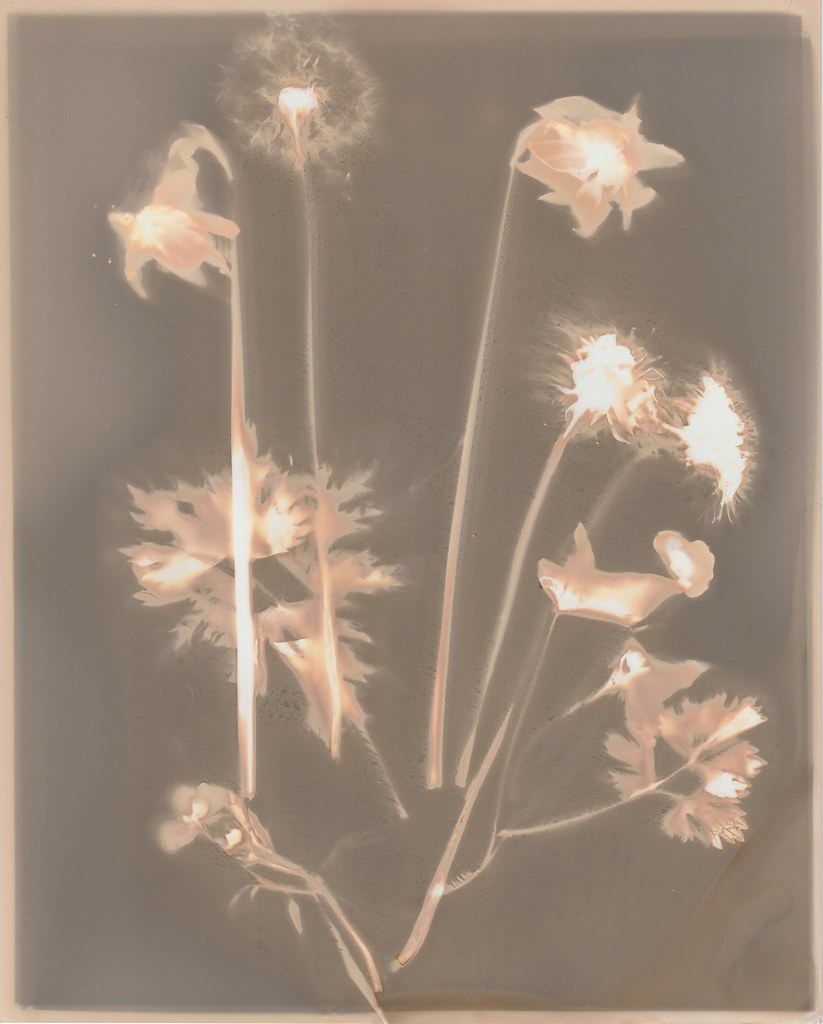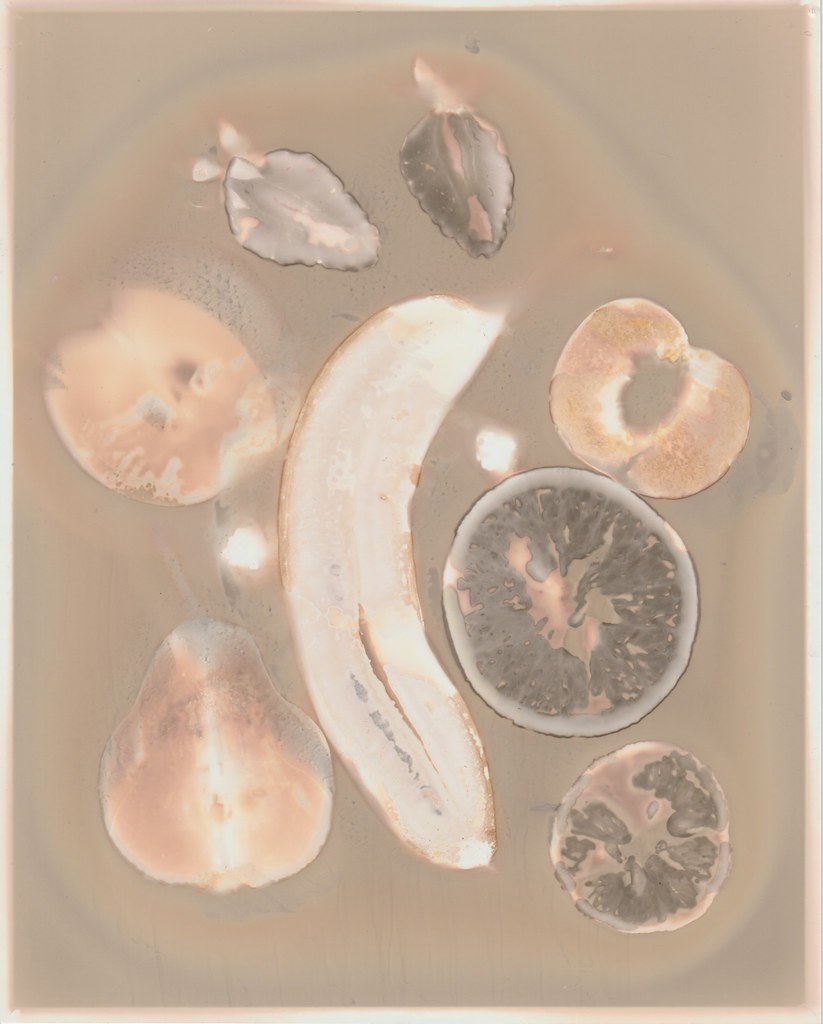ChrisR
I'm a well known grump...
- Messages
- 11,025
- Name
- Chris
- Edit My Images
- Yes
Since we're on an alternative process and cameraless photography kick here, has anyone done any lumen printing?
As far as I can see it's a method of making coloured photogram-type prints using black and white (wet print) photo paper (!). You arrange your (usually) organic material on the paper (in the dark, with a red safe light), put some glass over the top, expose it in the sun for periods that seem to vary between a few minutes and a week or so, depending what you read. Then wash and either scan or fix and wash (not develop) the image. Fixing apparently changes to contrast and colours. Some of the result are very interesting. Not sure if it's something I'll try, having neither the right photo paper nor a suitable tray for fixing.
Some links:
https://photographyproject.uk/alternative-processes/make-creative-lumen-prints/
https://www.ilfordphoto.com/making-lumen-prints-an-isolation-project/
https://www.natashasanchezcreates.com/lumen-prints
http://www.alternativephotography.c...nt-a-step-by-step-process-with-printing-tips/
I had a feeling that @thedarkshed might have tried this...
As far as I can see it's a method of making coloured photogram-type prints using black and white (wet print) photo paper (!). You arrange your (usually) organic material on the paper (in the dark, with a red safe light), put some glass over the top, expose it in the sun for periods that seem to vary between a few minutes and a week or so, depending what you read. Then wash and either scan or fix and wash (not develop) the image. Fixing apparently changes to contrast and colours. Some of the result are very interesting. Not sure if it's something I'll try, having neither the right photo paper nor a suitable tray for fixing.
Some links:
https://photographyproject.uk/alternative-processes/make-creative-lumen-prints/
https://www.ilfordphoto.com/making-lumen-prints-an-isolation-project/
https://www.natashasanchezcreates.com/lumen-prints
http://www.alternativephotography.c...nt-a-step-by-step-process-with-printing-tips/
I had a feeling that @thedarkshed might have tried this...

















